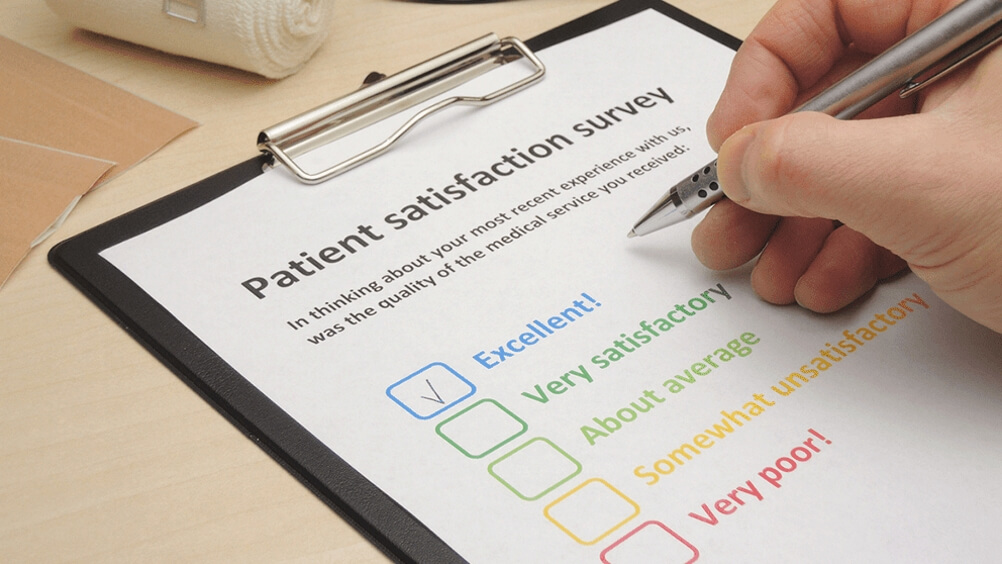The C-suite contains quite a dazzling array of acronyms from CMO (Chief Marketing Officer or Chief Medical Officer) to CTO (Chief Technology Officer or in some cases Chief Talent Officer) to CDO (Chief Design Officer) and CBO (Chief Business Officer). And just when you thought you knew them all, along comes a new C, the CXO, or Chief Patient Experience Officer.
A CXO is responsible for bringing executive level focus on the overall patient experience. A positive patient experience depends on many factors in addition to the quality of care provided by the doctors and nurses. Despite excellent treatment, a patient’s experience can be unpleasant if scheduling is slow and cumbersome, if wait times are long, if the medical staff lacks empathy, if complicated and confusing medical procedures are not explained well leaving them confused, or – more mundanely – if the coffee in the cafeteria tastes bad and the chairs in the waiting area are uncomfortable.
This complex and complicated interface of culture, processes, and healthcare delivery is where the CXO operates to bring a “patients first” philosophy to every part of the organization that touches the patient. The CXO’s role is to “bake” the patient first mind set into the organization, to implement tools to objectively measure satisfaction, develop programs to systematically address areas of improvement, and oversee and direct staff training and coaching.

Download this thought leadership white paper for ideas on how to make a plan to drive appointments and recoup lost revenues. Don’t miss these actionable patient engagement tips.
The drive towards improving patient satisfaction is propelled by a number of factors. With the rise of Accountable Care Organizations and their focus on value-based healthcare, good Hospital Consumer Assessment of Healthcare Providers and Systems survey (HCAPHS) scores based on a good patient experience help healthcare providers preserve their full Medicare reimbursement. Increased efficiency, e.g. making scheduling and rescheduling of appointments easier, not only reduces wait times for patients and thereby improves their experience, but also increases the healthcare provider’s capacity utilization and thereby their revenues.
More fundamentally, though, a positive patient experience is at the core of the mission of every healthcare provider. Addressing patients’ complaints and issues is not new, but past experience has shown that systems in which all members are responsible for the patient experience but nobody is accountable don’t realize significant improvements. The role of the CXO unites all aspects of patient satisfaction in one C-suite position with full accountability and, critically, the support of the entire executive leadership including the CEO to drive tangible improvement.
The role of the CXO unites all aspects of patient satisfaction into one position with full accountability of patient experience improvements.
The role of a CXO is challenging with many stakeholders and interests that need to be taken into account. But it is also very rewarding when real improvements, not just to patient health but also to patient safety and quality of care, can be made. Based on patient feedback, one hospital replaced the existing small emergency call buttons with larger “pancake-style” buttons that are easier to push for patients in distress. That change not only made patients feel safer and more secure in the knowledge that they can easily call for help if needed, but also reduced the number of accidental calls saving the nurses unnecessary trips. As this example shows, a better patient experience can also be beneficial for the healthcare provider and the staff.

Healthcare professionals, we want to hear from you. If you work in healthcare, click this link, take our 10-minute survey, and get entered in our giveaway for a $100 Visa gift card.
Hiring a Chief Patient Experience Officer is a big commitment and might not be feasible for smaller hospitals and clinics. However, the drive towards improving the patient experience will continue. A better patient experience also improves care, patient safety as well as clinical and financial outcomes for the healthcare provider, e.g. by reducing the number of relapses and re-admissions by a happier, healthier and more compliant patient. Even organizations who aren’t quite ready yet to commit to a CXO will need to explore ways of giving the patient the best possible experience – both subjectively and objectively. A happy patient pays off for everybody involved.






